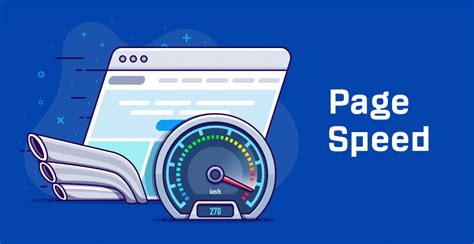It is undeniable that creating a seamless and engaging website experience is crucial for every online business. In today's digital landscape, where competition is fierce and attention spans are short, it is essential to optimize your website to capture and retain the attention of your audience. By employing the following 10 strategies, you can significantly enhance your website's performance and provide users with an outstanding experience.
1. Streamline Your Website Design: Simplify your website's layout and navigation to ensure a smooth user experience. Reduce clutter, use logical menu structures, and make important information easily accessible.
2. Enhance Website Speed: Optimize your website's loading speed by compressing images, minifying CSS and JavaScript files, and leveraging browser caching. A fast-loading website not only improves user experience but also boosts search engine rankings.
3. Implement Responsive Design: With the increasing use of mobile devices, it is crucial to have a website that adapts seamlessly to different screen sizes. Responsive design ensures that your site looks and functions flawlessly across all devices, enhancing user experience and increasing engagement.
4. Create Compelling Content: Engage your audience with high-quality and relevant content that is informative, entertaining, and easy to digest. Utilize strong headlines, subheadings, and bullet points to enhance readability and ensure key information is easily scannable.
5. Optimize for SEO: Improve your website's visibility in search engine results by implementing proper SEO practices. Use relevant keywords, create descriptive meta tags, and build high-quality backlinks to improve organic traffic and attract the right audience.
6. Implement Clear Call-to-Actions: Guide your users towards desired actions by incorporating clear and compelling call-to-action buttons. Whether it's signing up for a newsletter, making a purchase, or contacting you, clear CTAs increase conversions and improve overall user experience.
7. Prioritize Mobile Experience: With a significant portion of web traffic coming from mobile devices, it is essential to prioritize mobile experience. Test your website on various devices and ensure it is responsive, loads quickly, and offers a seamless experience on smartphones and tablets.
8. Improve Website Navigation: Implement intuitive navigation that allows users to easily find what they're looking for. Use a logical menu structure, incorporate search functionality, and provide breadcrumb navigation to enhance user experience and reduce bounce rates.
9. Regularly Check for Broken Links: Broken links can frustrate users and harm your website's credibility. Use tools to check for broken links and fix them promptly to provide a seamless browsing experience.
10. Continuously Monitor and Analyze: Regularly monitor your website's performance using analytics tools to identify areas of improvement. Analyze user behavior, track conversion rates, and make data-driven decisions to enhance your website's performance and user experience.
Enhance Your Website's Loading Speed

Maximizing the speed at which your website loads plays a crucial role in providing an exceptional user experience. Ensuring that your website loads swiftly is essential for attracting and retaining visitors, as nobody wants to spend valuable time waiting for a website to load. This section will delve into effective techniques that can be employed to optimize your website's loading speed, resulting in improved performance and better user engagement.
1. Streamline Code: By pruning unnecessary code and utilizing efficient programming techniques, you can significantly reduce the size of your website's files. This will not only decrease the time it takes for your website to load but also enhance its overall performance.
2. Compress Images: Images often account for a substantial portion of a website's file size. Optimizing images by compressing them without sacrificing quality can have a significant impact on the loading speed of your website.
3. Utilize Caching: Implementing browser caching allows for the temporary storage of certain website elements on a user's device. This enables faster loading times upon subsequent visits, as the browser can retrieve the stored data instead of downloading it again.
4. Minify CSS and JavaScript: Minification involves eliminating unnecessary characters, spaces, and comments in CSS and JavaScript files, reducing their size. Smaller file sizes lead to quicker loading times, resulting in a better user experience.
5. Optimize Server Response Time: Ensure that your hosting server is efficient and capable of handling requests quickly. A slow server response time can significantly impact your website's loading speed and overall performance.
6. Utilize Content Delivery Networks (CDNs): CDNs distribute your website's content to servers located in various geographical locations. By storing your website's files closer to the end-users, CDNs can significantly reduce the time it takes for content to reach them, resulting in faster loading times.
7. Limit the Use of External Scripts: Minimize the number of external scripts and third-party plugins used on your website. Each additional script adds to the loading time, so only use those that are necessary for optimal functionality.
8. Enable Browser Caching: By specifying cache headers, you can instruct the user's browser to store certain static elements of your website. This reduces the need for repeated downloads, leading to faster loading times on subsequent visits.
9. Optimize Web Fonts: Using a limited number of web fonts, and ensuring that they are served from efficient sources, can help minimize the impact on your website's loading speed.
10. Regular Performance Monitoring: Continuously monitor your website's loading speed using tools like Google PageSpeed Insights or GTmetrix. Regular performance evaluations will help you identify areas for improvement and gauge the effectiveness of implemented optimizations.
By implementing these strategies, you can significantly improve your website's loading speed, enhancing user experience, and ultimately achieving better site performance.
Enhancing Mobile Compatibility with Responsive Design
In this section, we will explore the significance of incorporating responsive design into your website to ensure optimal mobile compatibility. By employing responsive design techniques, you can enhance the user experience on various devices, ranging from smartphones to tablets, without compromising functionality or aesthetics.
Responsive design is a design approach that allows web pages to adapt dynamically to different screen sizes and orientations. It ensures that your website looks visually appealing and functions seamlessly across a wide range of devices, regardless of their screen dimensions. By utilizing responsive design, you can eliminate the need for separate mobile versions of your website, thereby streamlining your web development process and reducing maintenance efforts.
One key benefit of employing responsive design is the ability to provide a consistent user experience across all devices. With responsive design, your website's layout and content automatically adjust to fit different screen sizes, ensuring that users can easily navigate and interact with your site. This adaptability not only enhances user satisfaction but also increases the likelihood of visitors staying longer on your site and converting into loyal customers.
Furthermore, responsive design plays a crucial role in improving your website's search engine rankings. As search engines prioritize mobile-friendly websites in their search results, having a responsive design can lead to higher visibility and organic traffic. By optimizing your web pages for different screen sizes, you can enhance the overall SEO performance of your site.
In conclusion, integrating responsive design into your website is essential for achieving mobile compatibility and delivering an exceptional user experience. By ensuring that your site is easily accessible and visually appealing across various devices, you can attract and retain a wider audience, boost search engine visibility, and ultimately drive business growth.
The Importance of Reducing HTTP Requests to Enhance Page Load Speed

Enhancing the performance and user experience of your website involves various strategies, including optimizing page load times. One crucial factor that significantly impacts the speed at which your web pages load is the number of HTTP requests required to load them. Minimizing the number of HTTP requests can lead to faster page load times, better user experience, and improved website performance.
When a user visits a webpage, the browser sends HTTP requests to the server hosting the website to retrieve all the necessary files, such as HTML, CSS, JavaScript, images, and more. Each request incurs a certain overhead in terms of time and resources required for processing. Therefore, reducing the number of HTTP requests can effectively reduce the overall load time of the page.
One way to minimize HTTP requests is by combining multiple files into a single file. For example, you can merge multiple CSS files into one or concatenate JavaScript files to reduce the number of separate requests. This technique, known as file concatenation or file merging, can significantly optimize page load speed.
Another effective strategy is to leverage browser caching. By specifying appropriate cache headers, you can instruct the user's browser to store certain files locally, eliminating the need for subsequent HTTP requests on subsequent visits to the website. This caching mechanism can greatly speed up page load times for returning visitors.
Additionally, reducing the size of files can also have a considerable impact on the number of HTTP requests and page load speed. You can achieve this by compressing files, such as CSS and JavaScript, using techniques like minification. Minification removes unnecessary characters from these files without affecting their functionality, resulting in smaller file sizes and faster load times.
An often overlooked aspect of reducing HTTP requests is optimizing images. Images typically account for a significant portion of a webpage's file size. By optimizing and compressing images without compromising visual quality, you can drastically reduce their file size and, consequently, the number of necessary HTTP requests.
In conclusion, minimizing the number of HTTP requests made by a webpage is crucial for improving website performance and user experience. By employing tactics such as file merging, browser caching, file size reduction, and image optimization, you can significantly enhance page load times, resulting in a smoother browsing experience for your users.
Utilize Caching to Decrease Server Response Time
In the realm of maximizing the efficiency and speed of your website, one essential tactic involves harnessing the power of caching. By implementing caching mechanisms, you can significantly reduce the time it takes for your server to respond to user requests, leading to a faster and more seamless browsing experience.
When a user visits your website, their browser sends a request to the server to retrieve the necessary files and resources. This process, known as server response, can sometimes be quite time-consuming, especially if there are numerous requests or large files involved. However, by enabling caching, you can ensure that certain elements of your website are stored locally on the user's device, eliminating the need for repeated server requests.
- Browser caching: By configuring your server to set expiration dates for specific files, such as CSS stylesheets or JavaScript scripts, you can enable browser caching. This means that once a user has downloaded these files, their browser will store them locally and retrieve them from the cache when needed, rather than making additional server requests.
- CDN caching: Utilizing a content delivery network (CDN) can also enhance your website's performance by caching static files, such as images, videos, and documents, across multiple servers worldwide. This distributes the load and reduces the latency associated with retrieving these files from a single server, ultimately decreasing the server response time.
- Database caching: Another effective caching technique involves caching frequently accessed database queries, such as user profiles or product listings. By storing the results of these queries in memory or a dedicated caching system, subsequent requests for the same data can be fulfilled more quickly, bypassing the need to retrieve it from the database again.
Implementing caching strategies not only reduces server response time but also improves overall website speed, ultimately contributing to an enhanced user experience. By utilizing browser caching, CDN caching, and database caching, you can optimize your website's performance, delivering content quickly and efficiently to your visitors.
Enhance Website Speed and Enhance Visitor Interaction with Optimized Visual Content

One crucial aspect of creating a seamless and engaging user experience on your website is optimizing the use of images and multimedia elements. By carefully optimizing visual content, you can significantly improve your website's loading speed, minimize bandwidth usage, and ensure that your web pages adapt well to various devices and connections.
When it comes to optimizing images and multimedia for web use, it's essential to strike a balance between visual quality and file size. High-resolution images and videos may enhance the visual appeal, but if they are too large, they can slow down your website's loading speed and negatively impact visitor experience.
One effective method to optimize images is through compression. By reducing the file size while preserving the visual quality, you can ensure faster loading times without compromising on the user's viewing experience. Several online tools and software applications are available to help you compress images efficiently.
Additionally, consider using image formats that are suitable for the web, such as JPEG, PNG, or WebP. Each format has its strengths and is best suited for different types of images. Experimenting with various formats and finding the optimal one can significantly improve your website's performance and user experience.
Another aspect to consider is the use of multimedia elements, such as videos and animations. These can greatly enhance user engagement but can also contribute to increased loading times if not optimized correctly. Make sure to compress videos without sacrificing too much quality and consider utilizing video formats that are widely supported by web browsers.
| Benefits of Optimizing Visual Content: |
| 1. Faster website loading times |
| 2. Improved user experience |
| 3. Reduced bandwidth usage |
| 4. Enhanced compatibility across devices |
| 5. Increased visitor interaction and engagement |
In conclusion, by optimizing images and multimedia for web use, you can improve your website's performance and enhance the overall user experience. From compressing images to choosing suitable file formats, these optimization techniques can help maximize your website's speed and ensure that visitors can effortlessly interact with your visual content.
Implementing Clear and Intuitive Navigation
Enhancing the navigational structure of your website plays a crucial role in providing a seamless browsing experience for your visitors. By ensuring that your website's navigation is clear and intuitive, you can significantly improve user engagement and overall satisfaction.
- 1. Optimize your header menu: Crafting a well-organized header menu is vital for allowing users to easily navigate through different sections of your website. Consider using concise and descriptive labels for each menu item.
- 2. Incorporate a search bar: Adding a search bar to your website can enable visitors to quickly find specific information or products. Ensure that the search bar is easily visible and accessible from every page.
- 3. Utilize breadcrumbs: Breadcrumbs provide users with a trail of their browsing history, allowing them to understand their current location within your website's structure. This feature enhances the overall user experience and aids in easier navigation.
- 4. Implement logical page hierarchy: Structure your website in a logical manner by organizing pages into categories and subcategories. This approach simplifies navigation and helps users find relevant content more efficiently.
- 5. Use descriptive link text: When creating internal and external links within your website, make sure to use descriptive anchor text that accurately represents the destination page. This will assist users in understanding the content they can expect to find.
- 6. Include a sitemap: Providing a sitemap is an effective way to offer users an overview of your website's content and structure. This feature proves especially useful when your site has numerous pages or complex navigation.
- 7. Opt for a responsive design: In today's mobile-dominated era, it is imperative that your website is mobile-friendly. A responsive design ensures that your navigation is easily accessible and user-friendly across different devices and screen sizes.
- 8. Enhance visual cues: Implement visual cues such as icons, dropdown menus, and hover effects to guide users and highlight interactive elements. These cues can effectively enhance the usability and overall navigation experience.
- 9. Test and refine: Regularly analyze and evaluate the effectiveness of your website's navigation. Conduct usability testing and gather feedback to identify any pain points or areas that need improvement.
- 10. Stay consistent: Maintaining consistency throughout your website's navigation, such as using standardized icons and labeling conventions, creates familiarity and ease of use for visitors. Consistency contributes to better user experience and navigation.
By implementing clear and intuitive navigation techniques on your website, you can ensure that visitors can effortlessly explore your content, find what they need, and ultimately have a positive and satisfying user experience.
Ensuring Consistent and Engaging Content

Delivering a seamless and captivating user experience on your website is crucial for increasing engagement and keeping visitors coming back for more. One key aspect of achieving this is by providing consistent and engaging content throughout your website. Consistency in content not only helps establish a clear message and tone for your brand, but it also creates a sense of reliability and trust among your audience.
Here are some strategies to ensure that your content remains consistent and engaging:
- Establish a consistent brand voice: Define your brand's personality and tone, and ensure that it is reflected consistently in your content. This will help your audience connect with your brand and understand what you stand for.
- Create a content style guide: Develop a set of guidelines for your content creators to follow, including guidelines for grammar, punctuation, formatting, and tone. This will help maintain a consistent and professional look and feel across all your content.
- Use storytelling techniques: Humans are naturally drawn to stories, so incorporate storytelling elements into your content to make it more engaging. Tell stories that resonate with your audience and evoke emotions to create a deeper connection.
- Provide valuable and relevant information: Ensure that your content is informative, useful, and relevant to your target audience. Conduct research and keep up with industry trends to create content that addresses their needs and interests.
- Format your content for readability: Break up your content into smaller paragraphs, use subheadings, and incorporate bullet points or numbered lists to make it easier for users to scan and digest the information. Additionally, use a legible font and appropriate font size to enhance readability.
- Optimize your content for search engines: Implement effective SEO strategies to improve your website's visibility on search engine result pages. This will attract more organic traffic to your site and increase the chances of engagement with your content.
- Encourage user-generated content: Foster user participation by allowing users to contribute their content, such as reviews, comments, or testimonials. This not only adds diversity and authenticity to your content but also creates a sense of community around your brand.
- Keep your content up to date: Regularly review and update your content to ensure its accuracy and relevance. Outdated information or discontinued products/services can lead to a poor user experience and reflect negatively on your brand.
- Incorporate visual elements: Use images, videos, infographics, and other visual elements to enhance the visual appeal of your content and make it more engaging. Visual content can also help convey complex information in a more digestible format.
- Analyze and optimize your content performance: Utilize analytics tools to track the performance of your content and identify areas for improvement. Monitor metrics such as engagement, time on page, and bounce rate to gain insights and refine your content strategy.
By focusing on creating consistent and engaging content, you can enhance the overall user experience and leave a lasting impression on your website visitors. Follow these tips and continually adapt your content strategy to meet the evolving needs and preferences of your audience.
FAQ
How can I improve the performance of my website?
There are several ways to improve website performance. Some tips include optimizing images and videos, minimizing HTTP requests, enabling browser caching, using a content delivery network, and reducing server response time.
Why is website performance important for user experience?
Website performance is crucial for user experience because a slow-loading website can frustrate users and drive them away. Fast-loading pages, on the other hand, provide a better user experience, increase user engagement, and improve conversion rates.
What is browser caching and how does it enhance website performance?
Browser caching is a technique that allows a web page to store certain files in the user's browser cache. When the user visits the website again, these files can be loaded locally from the cache instead of requesting them from the server, resulting in faster load times.
Why is it important to optimize images and videos on a website?
Optimizing images and videos helps reduce their file size without compromising their quality. This leads to faster load times, saves bandwidth, and improves overall website performance. It's important to find the right balance between image quality and file size to provide the best user experience.
What are the benefits of using a content delivery network (CDN) for my website?
A content delivery network (CDN) is a network of servers located around the world that stores cached copies of your website's static content. By delivering content from the server closest to the user, CDNs help reduce latency and speed up page load times. This enhances user experience, especially for visitors from different geographical locations.



